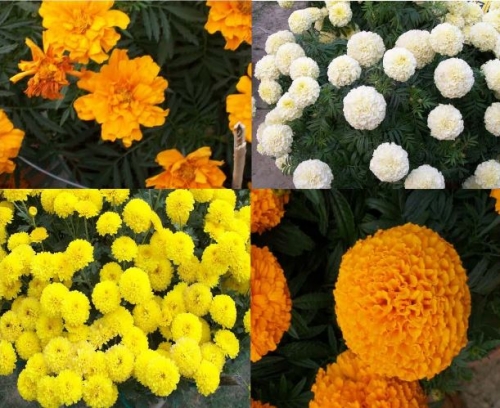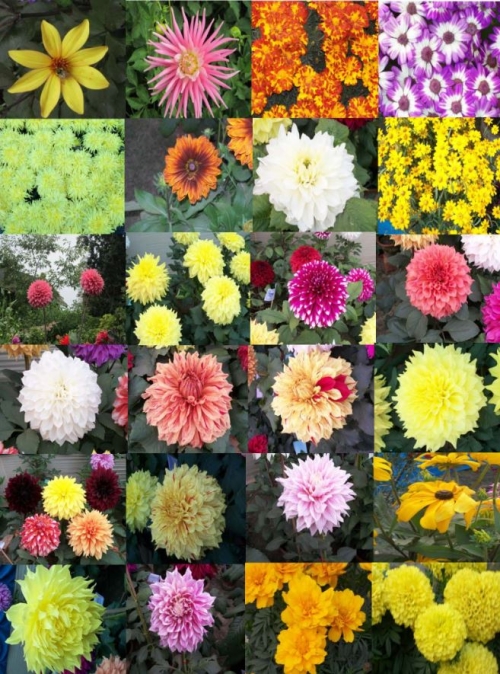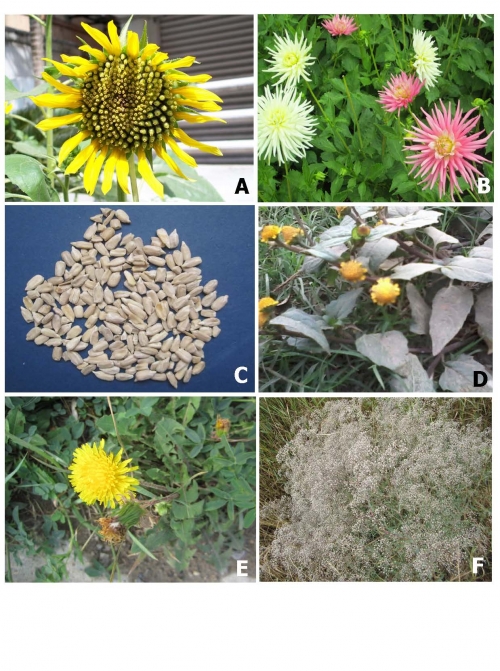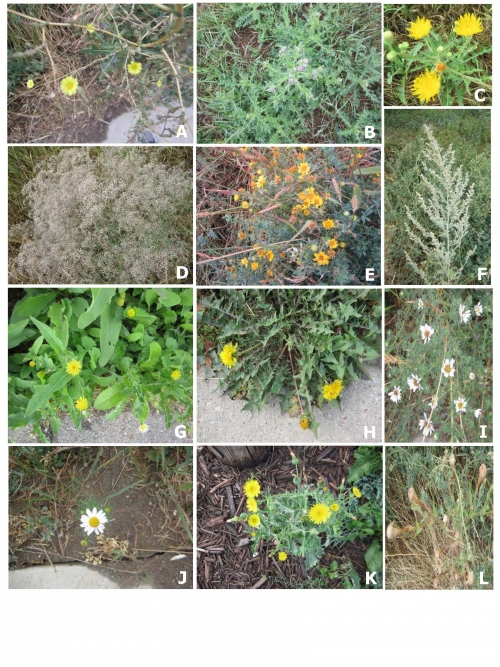Asteraceae: The sunflower family
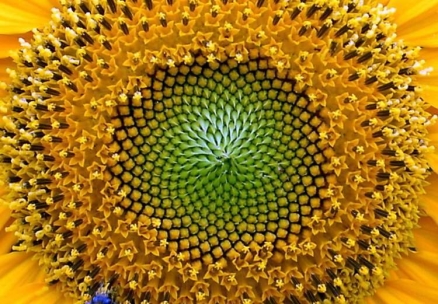
Sunflower, Helianthus annuus (Photo by Aldo De Bastiani, via http://luirig.altervista.org/photos-search/index.php?title=Helianthus+annuus)
Asteraceae, also called Compositae, is one of the largest angiospermic plant families among the dicotyledonous,based on the large number of species (1,620 genera and 23,600 species) that represent this plant family with cosmopolitan distribution (Funk et al.,2005). Constituting almost 10% of all flowering plants worldwide, Asteraceae is usually divided into 12 subfamilies (Funk et al., 2009). Except for Antarctica, the family is most abundant in the sub-tropical and temperate latitudes, occurring commonly across meadows, valleys, grassy plains, rolling plateaus, and mountainous slopes (Funk et al., 2005 ; Bayer et al., 2007). Itincludesedible, medicinal, noxious, invasive and endangered species (Heywood et al., 2007). The majority of plant members representing this family are herbaceous in nature, but shrubs and trees, as well as creepers and climbers, are also reported. They can easily be detected by severalfactors, such asfused anthers, single ovules in fruits, and their capitulum inflorescence (Garcia et al., 2010).
Contents
Physical Description
Leaf arrangement is alternate,often appearing in basal rosette formation and the leaves are devoid of stipules. The floral arrangement is unique for this plant family with a distinct head-like structure appearing as a single flower called a capitulum (Fig 1). Botanically speaking, the capitulum inflorescence is an unique collection of numerous tiny flowers arranged on a common platform (receptacle). There are two types of flowers observed within the capitulum inflorescence-ray or ligulate and disk or tubular. The central part of the capitulum is occupied by the disk florets and the periphery is arranged with the ray florets.
| Figure 1. Conspicuous capitulum inflorescence of Asteraceae family. (Saikat Basu, own work) |
Flowers could be unisexual or bisexual (hermaphrodite), regular or irregular, but areusually pentamerous and sympetalous with inferior ovary. The common fruit type of Asteraceae is achenes. The specialized design of the flowers and the inflorescence are believed to promote pollination and the process of cross pollination. Androecium has five stamens united at the anthers, forming a tube-like structure around the style. Calyx is often absent in this family and are replacedby bristles or scaly structures in the form of pappus. The pappus is known to help in the widespread dispersal of matured seeds via wind. Mature seeds mostly do not have any endosperms. The wide diversity of the Asteraceae family is presented in Figures2-3.
| Figure 2. Morphological diversity of floral structures among Asteraceae members. (Saikat Basu, own work) |
| Figure 3. Morphological diversity of floral structures among Asteraceae members. (Saikat Basu, own work) |
Importance of Family
The plant family is important economically, producing many oil products such as sunflower, safflower etc; vegetables such as artichokes, lettuce etc; ornamental members such as dahlia, zinnia, cosmos, aster, sunflowers, marigolds, chrysanthemum etc; medicinal plants such calendula, tansy, chamomile, wormwood, arnica, coltsfoot, echinacea, elecampane, milk thistle, chicory etc and weeds like dandelion, ragwort, groundsel etc (Funk et al., 2009). Asteraceae is known to be one of the most evolved among the angiospermic plant families and is comparable to Orchidaceae members among monocotyledonous for their widespread, morphological, anatomical, physiological and ecological adaptations for wide distribution, dissemination and reproductive success (Heywood et al., 2007).
|
Figure 4. A-J. Variations in the inflorescence (capitulum) among different members of Asteraceae.K-M. Pappus (modified calyx), a diagnostic character of the Asteraceae family associated with the floralstructure. Thin and dried, they help in wide dispersal of the seeds of the plants via wind. Widemorphological variations are observed in the structure of pappus across the family. (Saikat Basu, own work) |
|
Figure 5. Some important members of Asteraceae. A. Sunflower (Helianthus annuus L.) B. Dahlia sp.;C. Sunflower seeds after removal of the hard external seed coats; D. Acmella oleracea (L.) R. K. Jansen;D. Dandelion (Taraxacum officinale F. H. Wigg); and E. Parthenium hysterophorus L.(Saikat Basu, own work) |
|
Fig 6. Weeds from Asteraceae family.(Saikat Basu, own work) |
Plants representing Asteraceae members are presented in table 1.
Table 1. Plants representing Asteraceae family
|
|
|
|
|
|
|
|
|
|
|
|
|
| |
|
|
|
| |
|
|
|
| |
|
|
|
| |
|
|
|
| |
|
|
|
| |
|
|
|
| |
|
|
|
| |
|
|
|
| |
|
|
|
| |
|
|
|
| |
|
|
|
| |
|
|
|
| |
|
|
|
| |
|
|
|
| |
|
|
|
| |
|
|
|
| |
|
|
| ||
|
|
|
| |
|
|
| ||
|
|
|
| |
|
|
| ||
|
|
|
| |
|
|
|
| |
|
|
|
| |
|
|
|
| |
|
|
|
| |
|
|
|
| |
|
|
|
| |
|
|
|
| |
|
|
|
| |
|
|
|
| |
|
|
|
| |
|
|
|
| |
|
|
|
| |
|
|
|
| |
|
|
|
| |
|
|
|
| |
|
|
|
| |
|
|
|
| |
|
|
|
| |
|
|
|
| |
|
|
|
| |
|
|
|
| |
|
|
|
| |
|
|
|
| |
|
|
|
| |
|
|
|
| |
|
|
|
| |
|
|
|
| |
|
|
|
| |
|
|
|
|
|
|
|
|
|
|
|
|
| |
|
|
|
| |
|
|
|
| |
|
|
|
| |
|
|
|
| |
|
|
|
| |
|
|
|
| |
|
|
|
| |
|
|
|
| |
|
|
|
| |
|
|
|
| |
|
|
|
| |
|
|
|
| |
|
|
|
| |
|
|
|
| |
|
|
|
| |
|
|
|
| |
|
|
| ||
|
|
|
| |
|
|
|
| |
|
|
| ||
|
|
|
| |
|
|
|
| |
|
|
|
| |
|
|
|
| |
|
|
|
| |
|
|
|
| |
|
|
|
| |
|
|
|
| |
|
|
|
| |
|
|
|
| |
|
|
|
| |
|
|
|
| |
|
|
|
| |
|
|
|
| |
|
|
|
| |
|
|
|
| |
|
|
|
| |
|
|
|
| |
|
|
|
| |
|
|
|
| |
|
|
|
| |
|
|
|
| |
|
|
|
| |
|
|
|
| |
|
|
|
| |
|
|
|
| |
|
|
|
| |
|
|
|
| |
|
|
|
| |
|
|
|
| |
|
|
|
| |
|
|
|
| |
|
|
| ||
|
|
|
| |
|
|
|
|
|
|
|
|
|
|
|
| |
|
|
|
| |
|
|
|
| |
|
|
|
| |
|
|
|
| |
|
|
|
| |
|
|
|
| |
|
|
|
| |
|
|
|
| |
|
|
|
| |
|
|
|
| |
|
|
|
| |
|
|
|
| |
|
|
|
| |
|
|
|
| |
|
|
|
| |
|
|
|
| |
|
|
|
| |
|
|
|
| |
|
|
|
| |
|
|
|
| |
|
|
|
| |
|
|
|
| |
|
|
|
| |
|
|
|
| |
|
|
| ||
|
|
| ||
|
|
|
| |
|
|
| ||
|
|
|
| |
|
|
|
| |
|
|
|
| |
|
|
|
| |
|
|
|
| |
|
|
|
| |
|
|
|
| |
|
|
| ||
|
|
|
| |
|
|
|
| |
|
|
| ||
|
|
|
| |
|
|
| ||
|
|
|
| |
|
|
|
| |
|
|
| ||
|
|
|
| |
|
|
| ||
|
|
| ||
|
|
| ||
|
|
| ||
|
|
| ||
|
|
|
References and Further Reading
- Bayer RG, Breitwieser J, Jeffrey C, Dillon, MO, Eldenäs P, Funk V, Garcia-Jacas N, Hind DJN, Karis PO, Lack HW, Nesom G, Nordenstam B, Oberprieler Ch, Panero JL, Puttock C, Robinson H, Stuessy TF, Susanna A, Urtubey E, Vogt R, Ward J, Watson LE (2007) Compositae In: Kadereit JW, Jeffrey C (eds), The Families and Genera of Vascular Plants ,Vol III, Flowering Plants · Eudicots, Springer Berlin Heidelberg, Germany. doi: 10.1007/978-3-540-31051-8_7
- Carlquist, S. (1976) Tribal interrelationships and phylogeny of the Asteraceae. Aliso 8: 465-492.
- Cronquist, A. (1980) Asteraceae. In: A. E. Radford et al., eds. 1980+. Vascular Flora of the Southeastern United States. 2+ vols. Chapel Hill. Vol. 1.
- Cronquist, A. (1994) Asteraceae. In: A. Cronquist et al., eds. 1972+. Intermountain Flora. Vascular Plants of the Intermountain West, U.S.A. 5+ vols. in 6+. New York and London. Vol. 5, pp. 5–471.
- De Villiers, S. E., and A. Cadman (2001) An analysis of the palynomorphs obtained from Tertiary sediments at Koingnaas, Namaqualand, South Africa. J. Afr. Earth Sci. 33: 17-47.
- Eldenäs, P. K., M. Källersjö, and A. A. Anderberg. 1999. Phylogenetic placement and circumscription of tribes Inuleae s. str. and Plucheeae (Asteraceae): Evidence from sequences of chloroplast gene ndhF. Molec. Phylogen. Evol. 13: 50–58.
- Elsik, W. C., and T. E. Yancey (2000) Palynomorph biozones in the context of changing paleoclimate, middle Eocene to lower Oligocene of the Northwest Gulf of Mexico. Palynology 24: 177-186.
- Funk VA, Bayer RJ, Keeley S, Chan R, Watson L, Gemeinholzer B, Schilling E, Panrelo JL, Baldwin BG, Garcia-Jacas N, et al. (2005) Everywhere but Antarctica: using a supertree to understand the diversity and distribution of the Compositae. In Biol Skr Edited by Friis I, Balslev H. 55:343-373.
- Funk VA, Susanna A, Stuessy TF, Robinson H (2009) Classification of Compositae. In: Funk VA, Susanna A, Stuessy T, Bayer R (eds) Systematics, evolution and biogeography of the Compositae. IAPT, Vienna, pp 171–189.
- Funk, V. A ., R. J. Bayer, S. Keeley, R. Chan, L. Watson, B. Gemeinholzer, E. E. Schilling, J. L. Panero, B. G. Baldwin, N. T. García Jacas, A. Susanna, and R. K. Jansen(2005) Everywhere but Antarctica: using a supertree to understand the diversity and distribution of the Compositae. Pages 343-373 in Plant diversity and complexity patterns-local, regional and global dimensions, (I. Friis and H. Balslev, eds.). Biol. Skr. 55.
- Garcia S, Panero JL, Siroky J, Kovarik A (2010) Repeated reunions and splits feature the highly dynamic evolution of 5S and 35S ribosomal RNA genes (rDNA) in the Asteraceae family. BMC Plant Biology, 10:176 doi:10.1186/1471-2229-10-176.
- Goertzen, L. R., J. J. Cannone, R. R. Gutell, and R.K. Jansen (2003) ITS secondary structure derived from comparative analysis: implications for sequence alignment and phylogeny of Asteraceae. Mol. Phylogenet. Evol. 29: 216-234.
- Graham, A. (1996) A contribution to the geologic history of the Compositae. Pages 123-140 in Compositae: Systematics. Proceedings of the International Compositae Conference, Kew, 1994, (D. J. N. Hind and H. Beentje, H. J. eds.). Royal Botanic Gardens, Kew.
- Harris, E. M. (1995) Inflorescence and floral ontogeny in Asteraceae: a synthesis of historical and current concepts. Botanical Review 61: 93-278.
- Heywood, V. H., J. B. Harbourne, and B. L. Turner, eds. (1977) The Biology and Chemistry of the Compositae. 2 vols. London, New York, and San Francisco.
- Heywood, V.H., Brummitt, R.K., Culham, A., & Seberg, O. (2007) Asteraceae. Pp. 46-51. In: Flowering Plant Families of the World. New York, Firefly Books.
- Hind, D. J. N., C. Jeffrey, and G. V. Pope, eds. (1995) Advances in Compositae Systematics. Kew.
- Hind, D. J. N., H. J. Beentje, P. D. S. Caligari, and S. A. L. Smith, eds. (1996) Proceedings of the International Compositae Conference, Kew, 1994. 2 vols. Kew.
- Jansen, R. K. et al. (1991) Phylogeny and character evolution in the Asteraceae based on chloroplast DNA restriction site mapping. Syst. Bot. 16: 98–115.
- Jansen, R. K. et al. (1992) Chloroplast DNA variation in the Asteraceae: Phyologenetic and evolutionary implications. In: D. E. Soltis et al., eds. 1992. Molecular Systematics of Plants. New York. Pp. 252–294.
- Jansen, R. K., and J. D. Palmer (1987) A chloroplast DNA inversion marks an ancient evolutionary split in the sunflower family (Asteraceae). Proc. Natl. Acad. Sci. U.S.A. 84: 5818-5822.
- Jeffrey, C. (1978) Compositae. In: V. H. Heywood, ed. 1978. Flowering Plants of the World. Oxford. Pp. 263–268.
- Jeffrey, C. (1995) Compositae systematics 1975–1993. Developments and desiderata. In: D. J. N. Hind et al., eds. 1995. Advances in Compositae Systematics. Kew. Pp. 3–22.
- Jeffrey, C. (2007) Compositae: Introduction with key to tribes. Pages 61-87 in Families and Genera of Vascular Plants, vol. VIII, Flowering Plants, Eudicots, Asterales (J. W. Kadereit and C. Jeffrey, eds.). Springer-Verlag, Berlin.
- Kedves, M. (1971) Presence de types sporomorphs importants dans les sediments prequaternaires Egyptiens. Acta. Bot. Hung. 17: 371-378.
- Kim K.-J., K. S. Choi, and R. K. Jansen (2005) Two chloroplast DNA inversions originated simultaneously during the early evolution of the sunflower family (Asteraceae). Mol. Biol. Evol. 22: 1783-1792.
- Kim K.-J., R. K. Jansen. (1995) ndhF sequence evolution and the major clades in the sunflower family. Proc. Natl. Acad. Sci. USA 92: 10379-10383.
- Kim, K. J. et al. (1992) Phylogenetic implications of rbcL sequence variation in the Asteraceae. Ann. Missouri Bot. Gard. 79: 428–445.
- Lane, M. (1996) Pollination biology of Compositae. Pages 61-80 in Compositae: Biology and Utilization, Proceedings of the International Compositae Conference, Kew, 1994, (P. D. S. Caligari and D. J. N. Hind, eds.). Royal Botanic Gardens, Kew.
- Panero, J. L. and V. A. Funk (2002) Toward a phylogenetic subfamilial classification for the Compositae (Asteraceae). Proc. Biol. Soc. Wash. 115: 909–922.
- Soltis, D. E., E. V. Mavrodiev, J. J. Doyle, J. Rauscher, and P. S. Soltis (2008) ITS and ETS sequence data and phylogeny reconstruction in allopolyploids and hybrids. Syst. Bot. 33: 7-20.
- Song, Z. C., Y. H. Zheng, and M. Y. Li. (1999) Paleogene palynostratigraphy. Pages 141-265 in Fossil Spores and Pollen of China: The Late Cretaceous and Tertiary Spores and Pollen (Z. C. Song, Y. H. Zheng, M. Y. Li, Y. Y. Zhang, W. M. Wang, D. N. Wang, C. B. Zhao, S. F. Zhou, Z. H. Zhu, and Y. N. Zhao, eds.). Science Press, Beijing.
- Stuessy, T.F., and D. Garver (1996) The defensive role of pappus in heads of Compositae. Pages 81-91 in Compositae: Biology and Utilization, Proceedings of the International Compositae Conference, Kew, 1994, (P. D. S. Caligari and D. J. N. Hind, eds.). Royal Botanic Gardens, Kew.
- Thorne, R. F., and J. L. Reveal (2007) An updated classification of the class Magnoliopsida ("Angiospermae"). Bot. Rev. 73: 67-181.
- Timme, R. E., B. B. Simpson, and C. R. Linder (2007) High-resolution phylogeny for Helianthus (Asteraceae) using the 18S-26S ribosomal DNA external transcribed spacer. Am. J. Bot. 94: 1837-1852.
- USDA (2014) Classification for Kingdom Plantae Down to Family Solanaceae. United States Department of Agriculture, Natural Resources Conservation Service. Available at: https://plants.usda.gov/java/ClassificationServlet?source=profile&symbol=Solanaceae&display=63 On 28th June, 2014
- Wagenitz, G. (1976) Systematics and phylogeny of the Compositae (Asteraceae). Pl. Syst. Evol. 125: 29–46.
